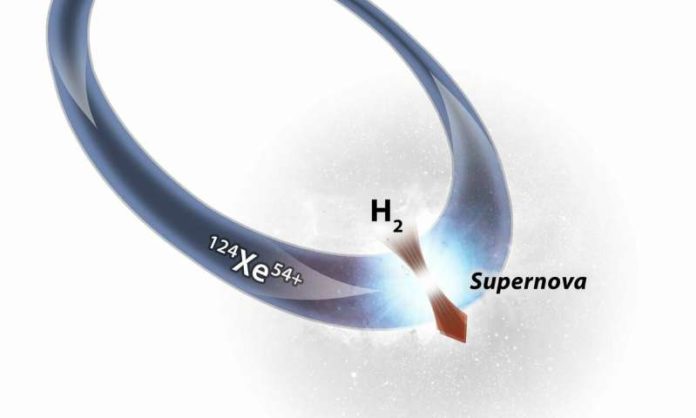Heavy elements are produced during the Steller explosion or on the surfaces of neutron stars through the catch of hydrogen cores (protons). This happens at amazingly high temperatures, however, at low energies.
A new study by the Goethe University has successfully investigated the capture of protons at the storage ring of the GSI Helmholtzzentrum für Schwerionenforschung.
Scientists’ main goal was to determine the probability of a proton capture in astrophysical scenarios.
As Dr. Jan Glorius from the GSI atomic physics research department explained, “During this, we addressed two main challenges: The reactions are most probable under astrophysical circumstances in an energy range called the Gamow window. In this range, nuclei tend to be somewhat slow, making them difficult to obtain at the required intensity. In addition, the cross-section—the probability of proton capture—decreases rapidly with energy. Until now, it has been almost impossible to create the right conditions in a laboratory for these kinds of reactions.”
René Reifarth, Professor for trial astronomy at Goethe University, recommended an answer almost 10 years ago: The low energies inside the Gamow window range can be achieved all the more absolutely when the heavy reaction partner flows in an accelerator in which it associates with a stationary proton gas.
He achieved initial successes in September 2015 with a group of Helmholtz early career researchers. Since then, his team has gained excellent support from Professor Yuri Litvinov, who leads the EU-funded research project ASTRUm at GSI.
In the new study, while experimenting, scientists successfully produced xenon ions. They then decelerated in the experimental storage ring ESR and caused to interact with protons. This resulted in reactions in which the xenon nuclei captured a proton and were transformed into heavier cesium—a process like that that occurs in astrophysical scenarios.
René Reifarth said, “The experiment makes a decisive contribution to advancing our understanding of nucleosynthesis in the cosmos. Thanks to the high-performance accelerator facility at GSI, we were able to improve the experimental technique for decelerating the heavy reaction partner. We now have more exact knowledge of the area in which the reaction rates occur, which until now had only been theoretically predicted. This allows us to model the production of elements in the universe more precisely.”
